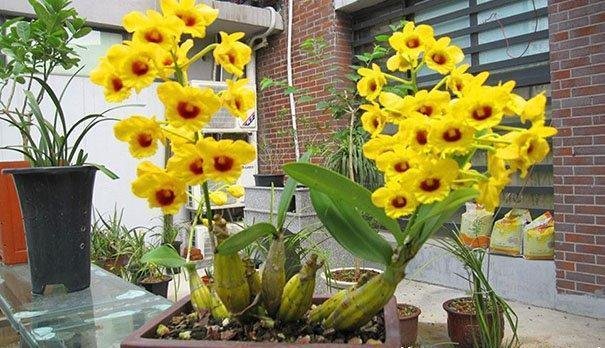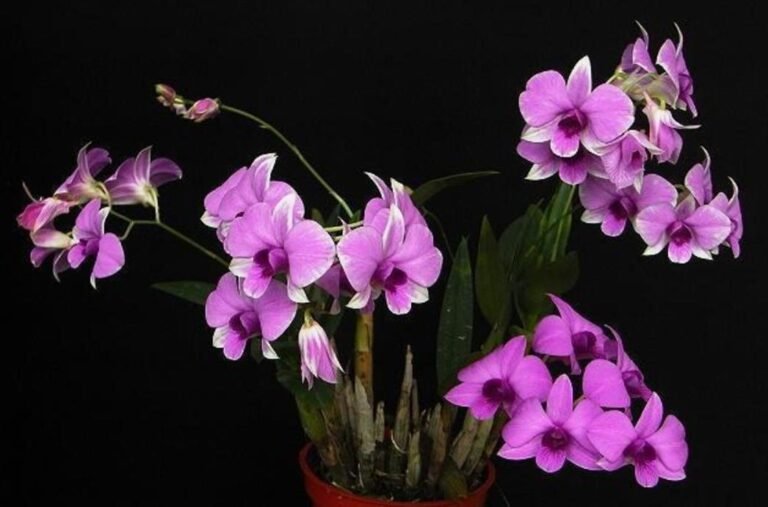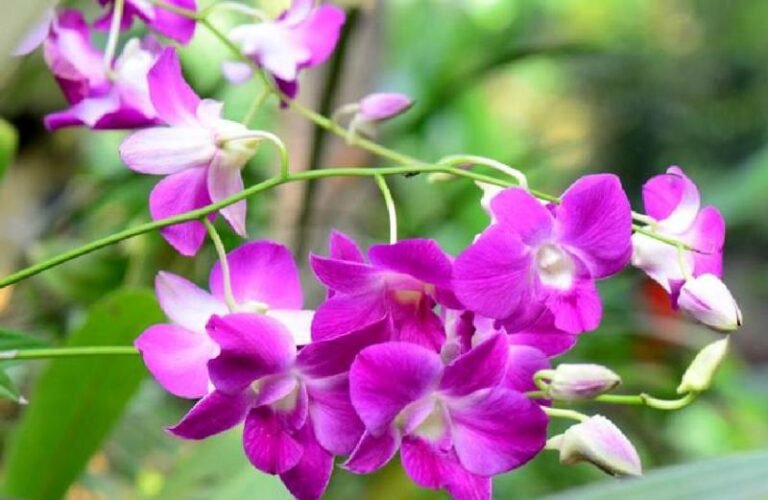Dendrobium chrysotoxum
Dendrobium (Latin name: DendrobiumchrysotoxumLindl.), commonly known as Golden Bow Dendrobium, Dendrobium, Orchidaceae, Dendrobium, IUCN Red List of Threatened Species (IUCN) vulnerable species.
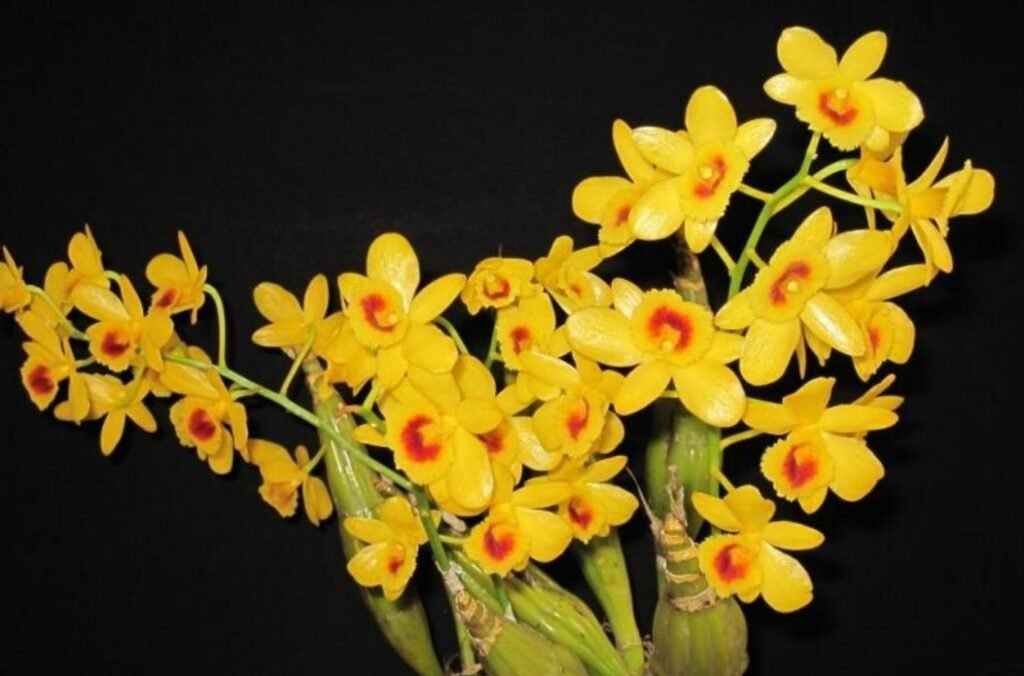
Dendrobium bulbosum stems are fusiform with numerous rounded obtuse ribs, leaves are leathery, oblong, inflorescences emanate near the stem tip, obliquely out or slightly pendulous, flowers are thick, golden-yellow, slightly fragrant.
Produced in northeastern India, Myanmar, China Yunnan south to west, etc., growing in sunny broad-leaved evergreen forests on tree trunks or understory rocks, altitude 520 to 1620 metres, flowering period from March to May.
The effects of Dendrobium bulbiflorum flowers are beauty, blood tonic, tranquillising the mind and brightening the eyes.
Morphological Characteristics
Dendrobium is a herbaceous plant.
The stem is erect, fleshy, fusiform, 6-30 cm long, 1.5-5 cm thick in the middle, with 2-5 internodes, with most of the obtuse strips, golden yellow after drying, with 2-5 leaves near the tip.
Leaves leathery, oblong, to 19 cm long, 2-3.5 cm wide or wider, apex acute and hooked, base narrowed but not decurrent into clasping sheaths.
Racemes arising near stem tip, obliquely exserted or slightly pendulous, to 20 cm; inflorescence axis stout, sparsely numerous flowered; peduncle with 4-5 sheaths at base; floral bracts small, membranous, ovate-lanceolate, 2-3 mm long, apex acute;
Pedicel and ovary yellow, to 5 cm; flowers thickly textured, golden yellow, slightly fragrant; middle sepal oblong, 1.2-2 cm, 5-9 mm wide at middle, apex slightly obtuse, with 7 veins; lateral sepals subequal to middle sepal; calyx capsule subglobose, ca. 4 mm wide.
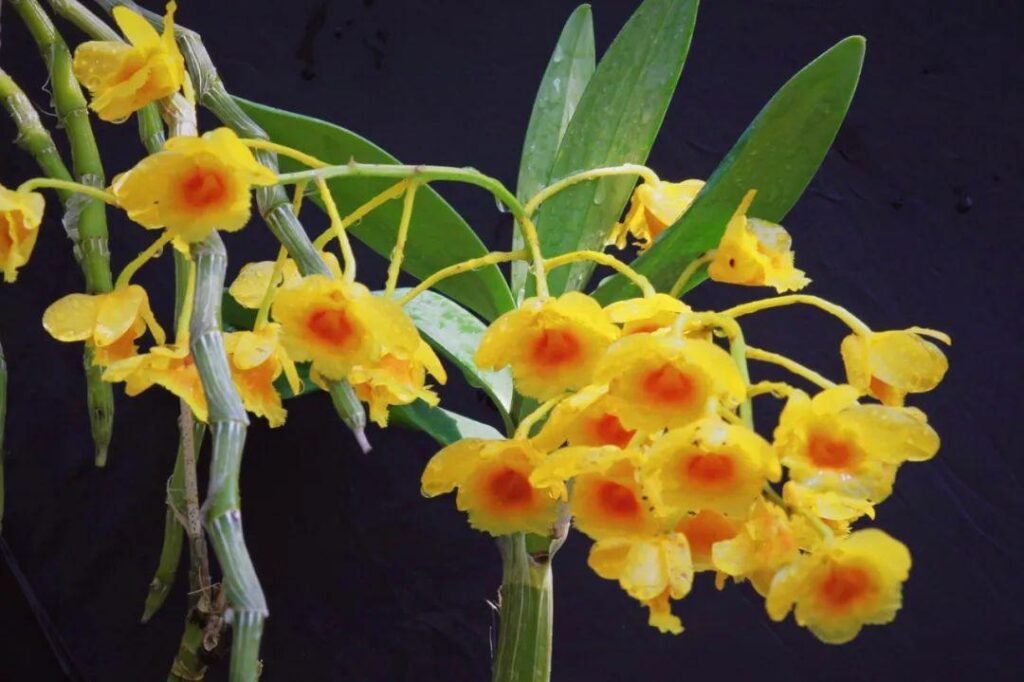
Growth habit
Dendrobium bulbiflorum is a shade-loving perennial herb, preferring to grow in a warm, humid, semi-shaded and semi-pale sunny environment with an annual rainfall of more than 1,000 millimetres.
January average temperature is higher than 8 ℃ subtropical deep forest growth is good, suitable for growth temperature of 15 to 28 degrees, suitable for growth air humidity of more than 60%.
Distribution range
Born at an altitude of 520-1620 metres, sunny broad-leaved evergreen forests on the trunk or understorey rocks.
Breeding and Cultivation
Selection of land
According to its growth habit, Dendrobium species should be cultivated in semi-shade and half-sun environment, with air humidity above 80% and winter temperature above 0℃.
Divide plants
Select the denser growing plants. After flowering. Take it out from the pot, remove the old very cut from the base of the clumped stem, cut the root system as much as possible at least hurt, only cover cut the interconnecting very present parts, the root with the hand bit to open, do not have to use the knife to cut.
Sprouting
When there are small plants at the top or base of the stems of plants cut in pots for more than 3 years or part of the autumn dendrobium stems, it can be propagated by cutting buds.
Select with 3-4 leaves, 2-3 roots, root length of 4-5 cm plantlets, cut from the mother plant, with grass ash or 70% of the generation of manganese zinc to treat the wound, the seedling implanted in the pot can be.
Wang Yi should be planted shallowly. After 2 years of cultivation, they can usually bloom into commercial flowers.
Cuttings
Propagation by cuttings can be combined with post-flowering potting and division of plants.
Selection of pots
Usually use plastic or ceramic pots with porous walls, and use carbon roots, peat moss, bark pieces, charcoal pieces, etc. as potting materials.
Fertiliser
Foliar fertiliser can be potassium nitrate, potassium dihydrogen phosphate, humic acid, etc., as well as imported three yuan compound fertiliser and diluted MS medium.
Disease and Insect Control
Black spot disease
When the disease occurs, young leaves show black-brown spots, with yellow colour around the spots, gradually spreading to the leaves, and in serious cases, the black spots connect with each other to form pieces on the leaves, and finally wither and fall off. This disease often occurs in early summer (March-May).
Prevention and control methods: Use 1︰1︰1:150 Bordeaux solution or Dolin 1000 times solution to prevent and control its development.
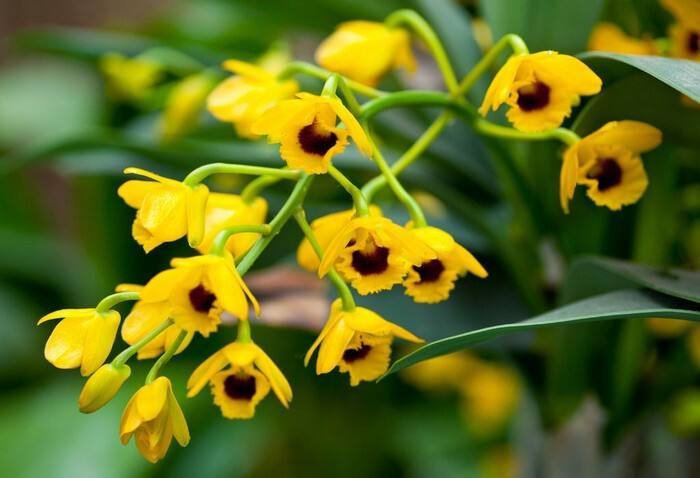
Main values
Medicinal use
Stem: Nourishing yin and generating fluids, quenching thirst and moistening the lung. It is used for heat diseases that injure the fluids, dry mouth and thirst, and deficiency fever after illness.
Botanical Culture
This genus of plants is considered to be ‘strong and loyal’, and was often honoured by Western societies as a tribute to their beloved elders.
Dendrobium is also given to fathers on 19 June every year and is called the ‘Father’s Day Flower’.
It has the language of ‘welcome, dear’, and can be made into a corsage with gerbera daisies and eucalyptus round-leafed trees and worn on the chest.
In Europe and the United States, dendrobium flowers are often used to make corsages, with Dianthus and asparagus, to say ‘welcome’.
To date, it is widely used for large banquets, opening ribbon-cutting ceremonies or entertaining VIPs.
